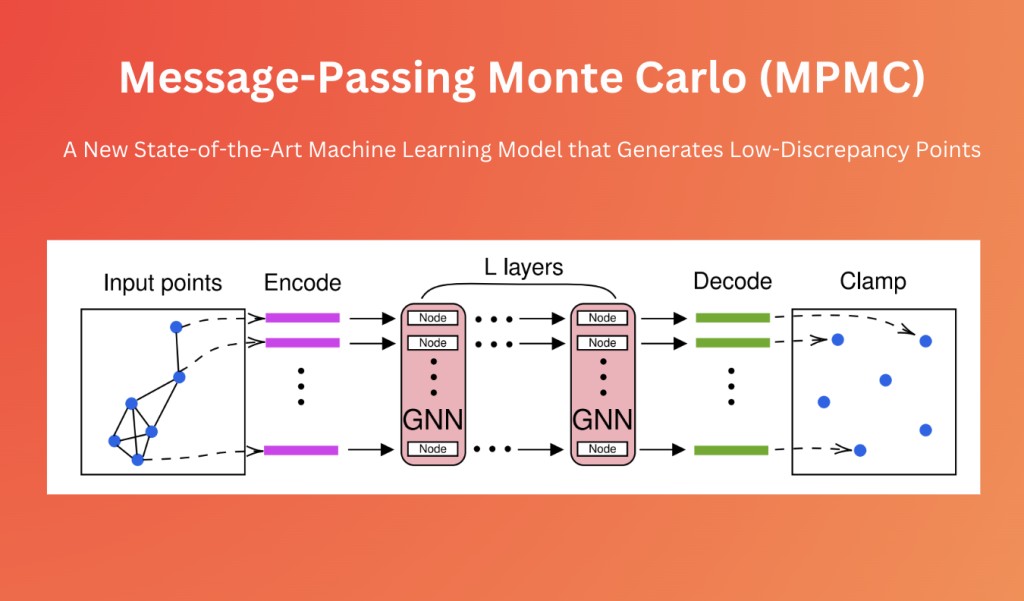Monte Carlo (MC) methods rely on repeated random sampling, so they are widely utilized for simulating and approximating complicated real-world systems. These techniques work especially well for financial mathematics, numerical integration, and optimization issues, particularly those about risk and derivative pricing. However, for complex issues in Monte Carlo, an unfeasibly large number of samples are required to obtain high precision.
The quasi-Monte Carlo (QMC) approach is a useful substitute for conventional Monte Carlo (MC) approaches. QMC uses a deterministic point set intended to cover the sample space more evenly than random sampling. Different discrepancy metrics are used to estimate the uniformity of the point distribution and how evenly the points cover the space. A low discrepancy point set indicates that the points are dispersed more equally and evenly throughout the space.
Low discrepancy points make it possible to approximate integrals across multidimensional spaces more accurately. In the same way, they guarantee that sample points cover the space evenly, which helps in the more effective and realistic production of images in computer graphics.
In a recent study, a team of researchers from the Massachusetts Institute of Technology (MIT), the University of Waterloo, and the University of Oxford. presented a unique Machine Learning method for producing low-discrepancy point sets. They have suggested Message-Passing Monte Carlo (MPMC) points as a unique class of low-discrepancy points. The geometric character of the low-discrepancy point set creation problem inspired this method. To address this, the team has built a model on top of Graph Neural Networks (GNNs) and has leveraged technologies from Geometric Deep Learning.
Because graph neural networks are so good at learning representations from structured input, they are especially well-suited for this task. This method involves building a computational graph in which the nodes stand in for the original input points, and the edges, determined by the points’ closest neighbors, indicate the relationships between these points. Through a series of message-passing operations, the GNN processes these points, allowing the network to learn and produce new points with the least amount of disparity.
The framework’s adaptability to larger dimensions is one of its main benefits. The model can be expanded to provide point sets emphasizing uniformity in particular dimensions that matter most for the given challenge. Because of its flexibility, the approach is very adaptable and may be used in a variety of situations.
The tests have shown that the suggested model outperforms earlier approaches by a large margin, achieving state-of-the-art performance in producing low discrepancy points. Empirical studies have demonstrated that the MPMC points produced by the model are either optimal or almost optimal in terms of disagreement across different dimensions and point counts. This indicates that, within the limitations of the problem, this method can yield point sets that are nearly completely uniform.
The team has summarized their primary contributions as follows.
A unique ML model has been proposed to produce low discrepancy points. This is a new way to solve the low-discrepancy point set creation problem using ML.
By minimizing the average disparity over randomly chosen subsets of projections, this approach is extended to higher dimensional spaces. This feature makes it possible to create unique point sets that highlight the most important dimensions of the given application.
The team has carried out a thorough empirical assessment of the suggested Message-Passing Monte Carlo (MPMC) point sets. The outcomes have shown that MPMC points provide higher performance in terms of discrepancy reduction, outperforming earlier techniques by a wide margin.
In conclusion, this research offers a unique ML technique for employing Graph Neural Networks to produce low-discrepancy point sets. This approach not only pushes the boundaries of discrepancy minimization but also offers a versatile framework for constructing point sets that are specifically fitted to the needs of a certain situation.Â
Check out the Paper. All credit for this research goes to the researchers of this project. Also, don’t forget to follow us on Twitter. Join our Telegram Channel, Discord Channel, and LinkedIn Group.
If you like our work, you will love our newsletter..
Don’t Forget to join our 44k+ ML SubReddit
The post Message-Passing Monte Carlo (MPMC): A New State-of-the-Art Machine Learning Model that Generates Low-Discrepancy Points appeared first on MarkTechPost.
Source: Read MoreÂ

